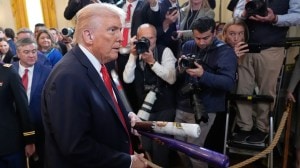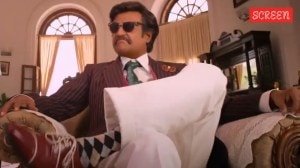Discovery repairs to be attempted during spacewalk today
Astronauts will perform a landmark spacewalk on Wednesday to remove or clip two strips of cloth protruding from the shuttle Discovery’s...

Astronauts will perform a landmark spacewalk on Wednesday to remove or clip two strips of cloth protruding from the shuttle Discovery’s belly that could cause dangerous heating during the craft’s fiery re-entry into the atmosphere.
Astronauts have never ventured to the underside of a shuttle during orbit or performed a safety-oriented repair during a mission.
Mission managers said at a briefing that they were unsure whether the protruding strips of the cloth, known as gap fillers, were the kind of minor annoyance shuttles routinely endure, or whether they could severely damage the vehicle.
The decision to try the repairs was made on Monday afternoon by members of the mission management team, after they reviewed three days of scientific analysis from around the nation. It required balancing the substantial risks of conducting a spacewalk with doing nothing on the assumption that all would be well.
Under some of the calculations, said N Wayne Hale, the programme’s deputy manager and the chairman of the mission management team, the strips could cause more heat than the wing panels were designed to resist. By comparison, he said, ‘‘the remedy is easy’’.
The spacewalk, Hale said, is straightforward, even though it will take astronauts to a part of the shuttle never visited during a mission and despite the risk of incidental damage.
The shuttle can return to Earth without either of the strips in place, mission managers said, because their chief purpose is to keep tiles from hitting each other during ascent. The areas of uncertainty are enormous, however, because the physics of atmospheric entry are numbingly complex and the data on the way materials perform is limited to the 113 previous shuttle flights.
‘‘Nobody else flies Mach 22 at 216,000 feet,’’ said Chuck Campbell, a NASA manager in aerothermodynamics. ‘‘The only data that we’ve got comes from the shuttle’’ On the mission’s second spacewalk on Monday, astronauts Robinson and Soichi Noguchi successfully replaced a failed gyroscope on the space station, giving the outpost a full set of stabilizers for the first time in three years.
The two spent 7 hours and 14 minutes in space, 45 minutes longer than scheduled, completing extra tasks for Wednesday’s outing. —NYT






- 01
- 02
- 03
- 04
- 05

























